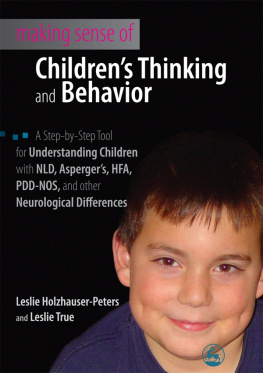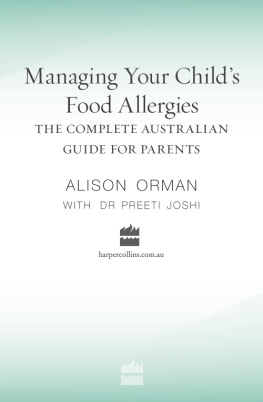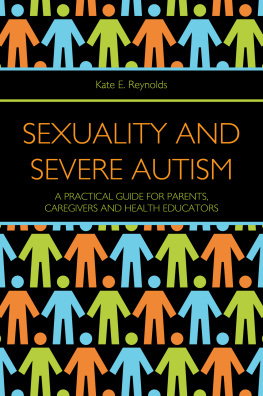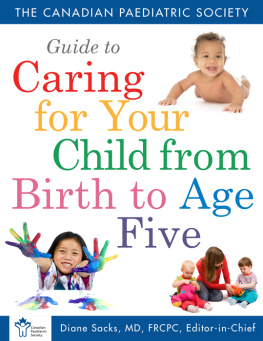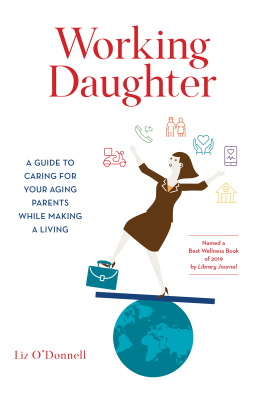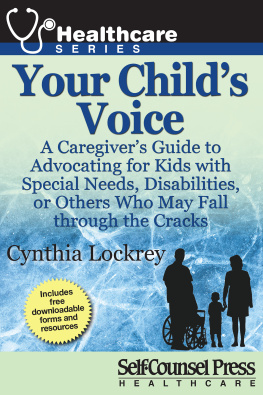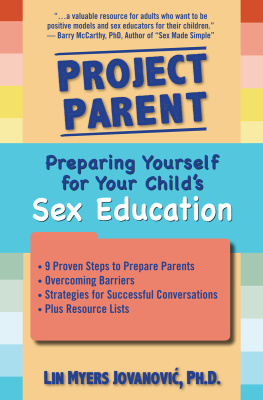Caring for Children Who Have
SEVERE NEUROLOGICAL IMPAIRMENT
Caring for Children Who Have
SEVERE NEUROLOGICAL IMPAIRMENT
A JOHNS HOPKINS PRESS HEALTH BOOK
A Life with Grace
JULIE M. HAUER, M.D.

Note to the Reader: This book was not written about your child and is not meant to substitute for medical care of your child. Treatment plans for individual children who have severe neurological impairment must be based on a dialogue between the physician and the patient and his or her family. Our book is intended to help with that dialogue.
Drug dosage: The author and publisher have made reasonable efforts to determine that the selection and dosage of drugs discussed in this text conform to the actual practices of the general medical community. However, the medications described do not necessarily have specific approval by the U.S. Food and Drug Administration for use in the diseases and dosages for which they are recommended here. In view of ongoing research, changes in governmental regulations, and the constant flow of information relating to drug therapy and drug reactions, the reader is urged to check the package insert of each drug for any change in indications and dosage and for warnings and precautions. This is particularly important when the recommended agent is a new and/or infrequently used drug.
2013 The Johns Hopkins University Press
All rights reserved. Published 2013
Printed in the United States of America on acid-free paper
9 8 7 6 5 4 3 2 1
The Johns Hopkins University Press
2715 North Charles Street
Baltimore, Maryland 21218-4363
www.press.jhu.edu
Library of Congress Cataloging-in-Publication Data
Hauer, Julie M., 1963
Caring for children who have severe neurological impairment : a life with grace/Julie M. Hauer.
p.; cm. (Johns Hopkins Press Health Book)
Includes bibliographical references and index.
ISBN 978-1-4214-0937-5 (pbk. : alk. paper)ISBN 1-4214-0937-2 (pbk.: alk. paper) ISBN 978-1-4214-0938-2 (electronic) ISBN 1-4214-0938-0 (electronic) I. Title. II. Series: Johns Hopkins Press health book.
[DNLM: 1. Nervous System Diseasestherapy. 2. Child Caremethods. 3. Child. 4. Nervous System Diseasescomplications. WS 340]
649.8dc23 2012037936
A catalog record for this book is available from the British Library.
by Jacqueline Schaffer
Special discounts are available for bulk purchases of this book. For more information, please contact Special Sales at 410-516-6936 or specialsales@press.jhu.edu.
The Johns Hopkins University Press uses environmentally friendly book materials, including recycled text paper that is composed of at least 30 percent post-consumer waste, whenever possible.
Foreword
Dear Parents and Family Members, Clinicians and Friends,
I imagine that you opened this book because a child you love or care foror both, as is most often the caseis living with severe neurological impairment, and you are looking for knowledge, help, guidance. Take heart: while no single source can provide all the information you might want, in the pages that follow you are going to find much that will be valuable in your efforts to provide the best care possible for this child.
The realities of children living with severe neurological impairment are twofold: a side of difficulties and dark moments, and a side of joy and light. Dr. Julie Hauer attends to both sides in this book, as she has done for every patient and family she has encountered over the years of her career as an esteemed and beloved physician devoted to the care of children with major medical problems. A self-proclaimed introvert from Minnesota, Julie is soft-spoken but vibrant when discussing the care of patients, and she combines the intellect of an expert with the warm-hearted empathy of an extrovert. Over the years, as I have come to know her as a trusted colleague, collaborating on several projects, I have learned much from her ideas about how to take better care of these children who have so many medical problems, and I have been captivated by her idealism of what good care can achieve.
Let me here acknowledge a wish that we all most likely sharethat this child did not have this condition or these problems, or that this condition could be cured, completely and forever. I feel this wish well up within me every time I take care of a child who has suffered a severe brain injury, or experiences intractable seizures, or is diagnosed with a tumor or a brain malformation, or has a progressive neurological disease. A large part of my career has been focused on trying to prevent these conditions and cure children who have these conditions. Yet, given the state of our medical knowledge and technology, including a vast array of medications and surgical procedures, many of these conditions cannot currently be cured, and while I fervently hope for the day when more cures become possible, in the meantime, children with these conditions need to be cared for, in a way respecting the reality of their situation and the great value of their lives. And in this undertaking of caring even when cure is not possible, I have found great hopesfor a better quality of life, for improved function, for less discomfort, for more time with family at homeand across this vast range of hopes that patients and their families value, I have witnessed the remarkable accomplishments that are possible, especially when we work together with a common sense of purpose and vision.
On the difficult side of living with severe neurologic impairment, this book is the best encyclopedia available regarding the problems these children encounter, and the best guide on how to think about, evaluate, and deal with these problems.
Some of the information needed to understand what is going on in the brain or in the rest of the body is, unavoidably, quite detailed and specific and laced with some medical terms. So, too, for descriptions of medications or surgical interventions or tests. For readers who are not familiar with the concepts or terms that Dr. Hauer uses, this book can be a primer on medical language and ideas that will enable parents and family members to talk with medical personnel and advocate for their child.
Guiding the reader through this information, Dr. Hauer is always very clearly organized, promoting, by example, an organized approach to addressing any medical problem that arises in the childs life. Additionally, her advice is always both grounded in the best available scientific or medical evidence (which is often, sadly, quite limited) and extremely pragmatic. No aspect of care is unimportant, no detail too small. If you are struggling with a tough decision, there is probably useful advice in the pages that follow. If your child has a jejunostomy feeding tube that is acting up, youll find three different methods to tryand three to avoid. If your child appears to be in pain and the source and thus the solution are unclear, an orderly, stepwise process of evaluation and potentially empirical trials of therapy is laid out.
Case vignettes and studies, which appear throughout the book, bring many of the common problems and dilemmas to life. From difficult seizure management or discomfort with feeding to deciding whether to have a tracheostomy tube insertedall of these challenges and more are illustrated, both in terms of the dilemmas and in terms of potential solutions. In tandem with these vignettes are a host of key points and tables to make finding or retrieving information efficient.
On the other side of these childrens lives are love and laughter. Dr. Hauer quotes a parent who says that you dont need to prepare for joyand joy there is, not all of the time, for sure, but often. Parents have told me how small, lovely things catch them off guard and take their breath away. The journey these parents take with their children has many unexpected turns but also surprising twists, some deep downs but also graceful ups. One goal of better medical care is to tip the balance more in favor of these high points, by improving the health status of the child and by empowering parents and clinicians to feel more capable of meeting the challenges that the children confront.
Next page

